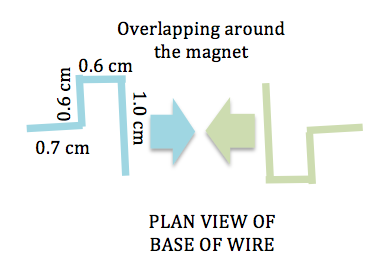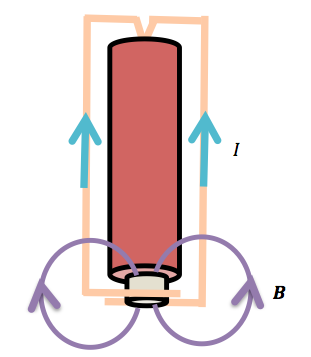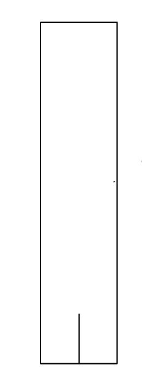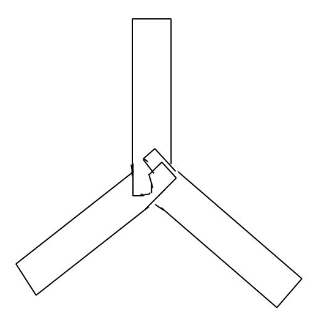A homopolar motor is a simple electric motor that does not require the use of a commutator. The electric current flows in a fixed direction within the wires of the motor. The following are instructions on how to construct this simple teaching tool that can be used to demonstrate how a motor works, as well as teach concepts such as Fleming’s left-hand rule and $$\mathbf{F}= I\mathbf{l \times B}$$.
Materials
- Copper wire (about 22 cm)
- Small neodymium magnets (1 or 2)
- 1.5 V AA-size battery
- Base with either another magnet or a iron surface, such as the head of an iron nail
Procedure
- Make a V-shaped bend in the middle of the copper wire, with about 0.5 cm on both sides of the V-shape. Bend the copper wire into a rectangular loop using the dimensions shown below.

- Tip: You may use the edge of a wooden block as a guide to bend the copper wires at right angles. A pair of wooden blocks can also be used to flatten the rectangular loop if you press them together tightly with the loop in between.
- Mount the neodymium magnet(s) onto the magnet or iron base.
- Hook the wires at the base around the magnets.
- Place the AA-sized battery with the protruding end on the magnet(s).
- Complete the electric circuit by placing the V-shaped end of the rectangular loop onto the flat end of the battery and watch the loop spin.
- Be careful not to keep the current flowing for too long as the battery and wire can get very hot.

Science Explained
- A force acts on a current if it is placed in a magnetic field. This force is what causes the motor to spin about its axis.
- To apply Fleming’s left hand rule, observe from the diagram below how the magnetic field bends around the magnet and its direction with respect to the direction of current flow. How do you think the loop will spin?

If you are having difficulty making this version of the homopolar motor, try the other design for the homopolar motor made using a screw.

